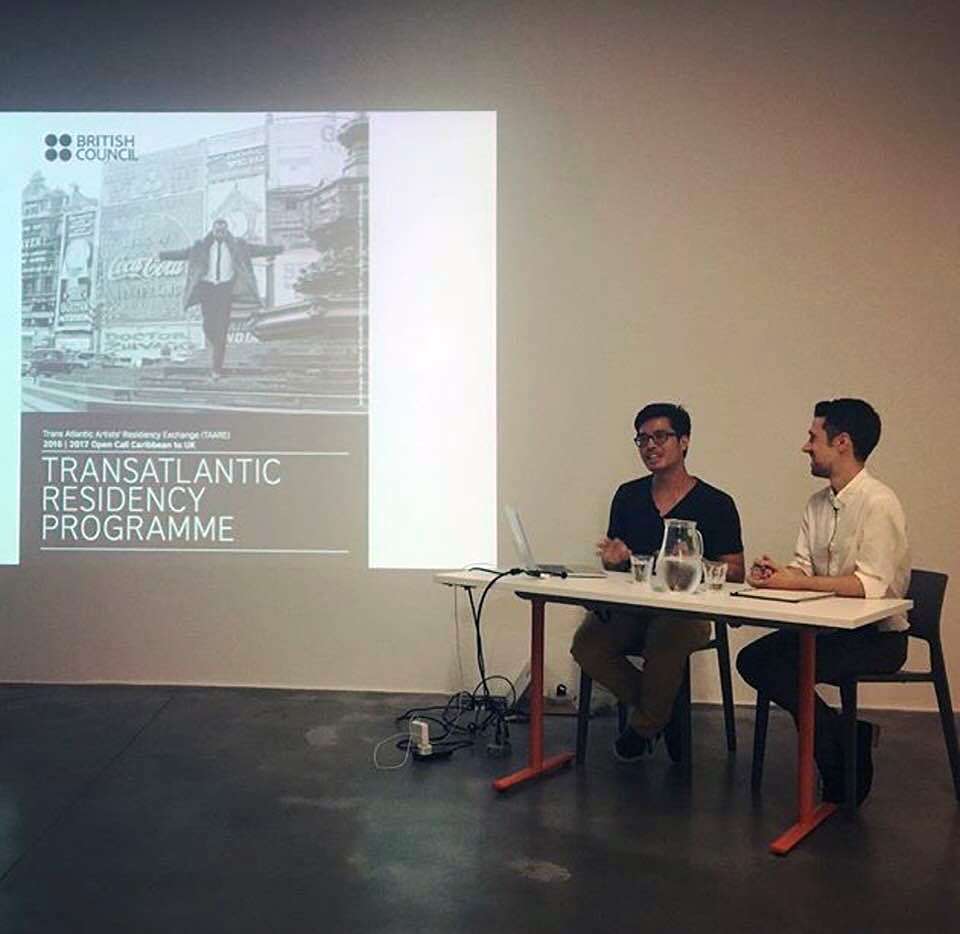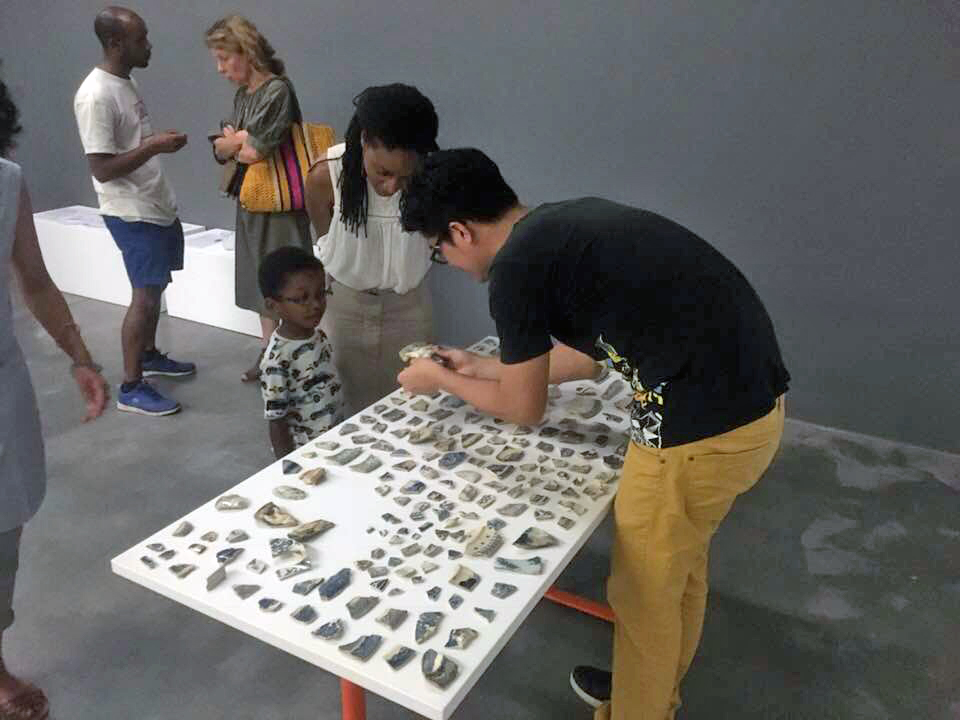Found clay pipes, copper nail and a 2000 year old flint tool, Chelsea, London, 2017. Photo: Joshua Lue Chee Kong
Collecting as Practice
I was selected as part of the Transatlantic Artists’ Residency Exchange(TAARE) programme initiated by the British Council Caribbean working in collaboration with Delfina Foundation, Gasworks, Autograph ABP and Hospitalfield Arts; and Caribbean partners: NLS Kingston in Jamaica and Alice Yard in Trinidad. The aim of TAARE is to focus on artistic exchanges between UK, Jamaica and Trinidad and Tobago. The residency is for visual artists, art critics and curators who want to make new transatlantic links, build on existing connections or to explore the further developments of their practice.
History literally washes onto the shore of the Thames with each changing tide.
The other thing about mudlarking is knowing what to look for and still expecting to find items of interest that will surprise you. The work I have done looking for fragments of history at various sites around Trinidad and Tobago has trained me for mudlarking. I have been uncovering similar fragments on the foreshore of the Thames as I would find in Trinidad and Tobago. As Trinidad and Tobago was a British colony until 1962. The year we gained our independence from the crown. These fragments would include glass bottles ranging from soda to medicine bottles. Endless pieces of ceramic shards, clay pipes and salt-glazed ceramic jars.
However, that is where the similarity stops as England is on another scale when compared to Trinidad and Tobago. One would be the quantity and quality of the various artefacts. These would extend from the Roman era to the present day because of the continuous occupation of England from various invaders/settlers.
One activity I have been eager to do was mudlarking, a Victorian term to describe scavengers who would scour the foreshore of the Thames river during low tide. They would collect scrap iron, coal, rope, copper rivets and anything they could have found to sell to meet their daily needs.
Mudlarks of the 21st century can still be called scavengers but are more history enthusiasts. It is a movement that is mostly interested in finding artefacts/objects to be used as a jumping point to uncover the past. This shows a shift in what items are valued and how they gain importance. The definition of value in itself is an open-ended. Is it monetary value? Sentimental value? Historical value?
The journey one makes from taking the bus to then walking down moss covered steps to the foreshore of the Thames river. For me, the journey to explore new spaces is what I value the most. It is those experiences that get my adrenaline pumping. There is an added rush when the path to the stairs is blocked by the rising tide and are forced to climb metal stairs. It has only happened once to me so far.
Mudlarking on the Thames River, Wapping, London, 2017. Photo: Joshua Lue Chee Kong
Selection of clay pipes, ceramic shards found in Trinidad and Tobago, Delfina Foundation, Victoria, London, 2017. Photo: Joshua Lue Chee Kong
Discussion with ceramic conservators at the Victoria & Albert Museum, London, 2017. Photo: Joshua Lue Chee Kong
English ceramic historian, Robin Hildyard at the Victoria and Albert Museum, London, 2017. Photo: Joshua Lue Chee Kong
Jenny White the head of the Visual Arts Programme at the British Council viewing my collection of shards, Delfina Foundation, Victoria, London, 2017. Photo Joshua Lue Chee Kong
With curator Nick Osborne at the Artist as Historian, Archaeologist and Archivist, Autograph BHP, London,2017. Photo: Hena Lee
The Artist as Historian, Archaeologist and Archivist, Autograph BHP, London,2017. Photo: Joshua Lue Chee Kong



